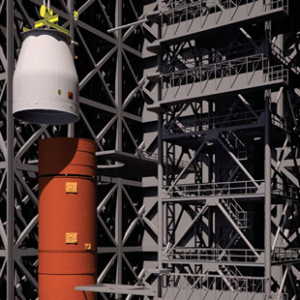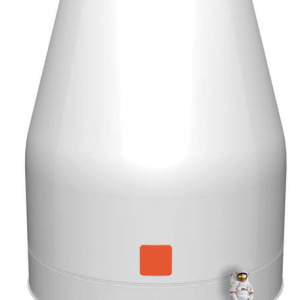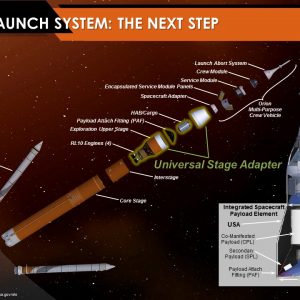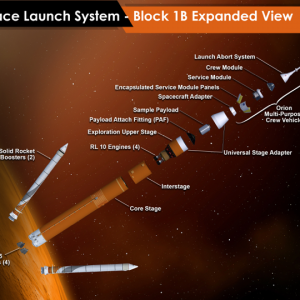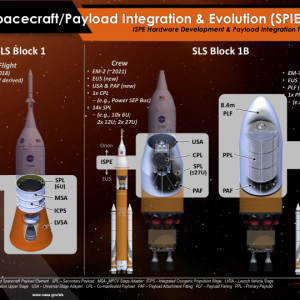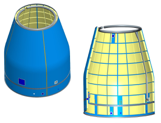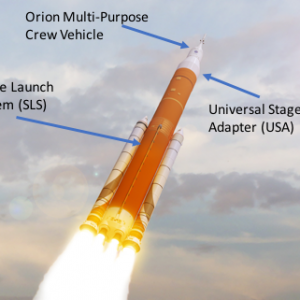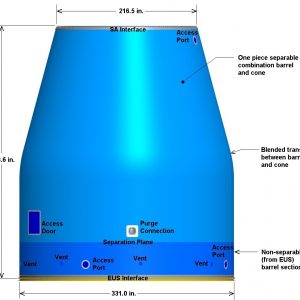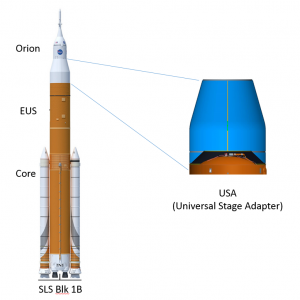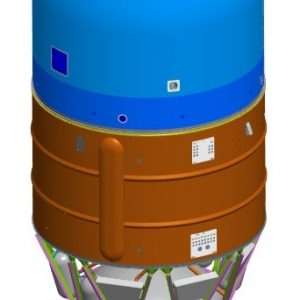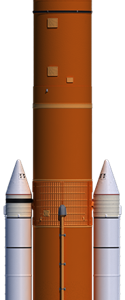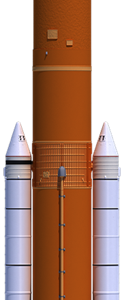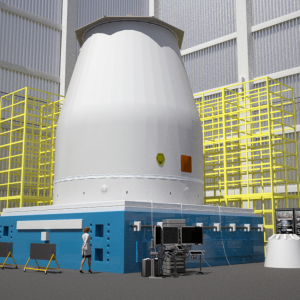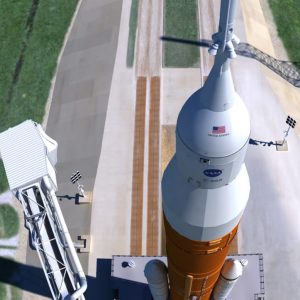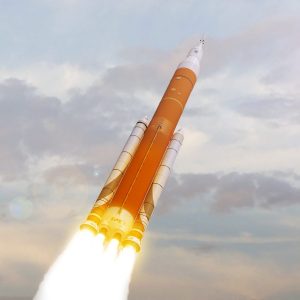Universal Stage Adapter (USA)
NASA’s Space Launch System (SLS) rocket is designed to be flexible and evolvable to meet a variety of crew and cargo mission needs – and with an exploration upper stage (EUS) planned for future configurations, the Universal Stage Adapter (USA) will connect the rocket to the Orion spacecraft.
Universal Stage Adapter
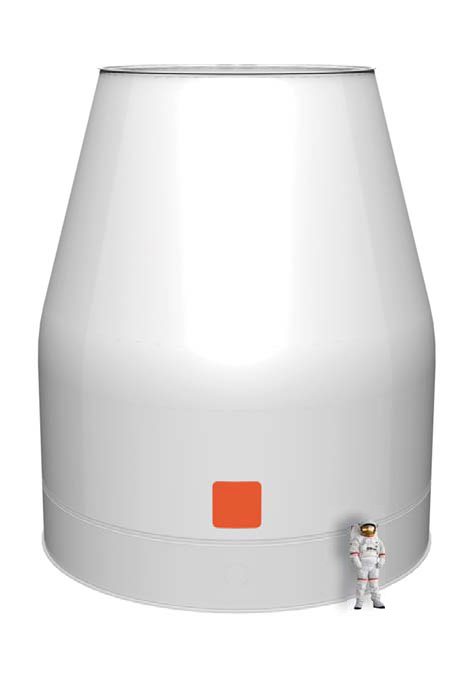
NASA’s Space Launch System (SLS) rocket is designed to be flexible and evolvable to meet a variety of crew and cargo mission needs – and with an exploration upper stage (EUS) planned for future configurations, the rocket will require a new adapter to connect it to the Orion spacecraft.
A Universal Stage Adapter (USA) will meet that need.
NASA’s Glenn Research Center in Cleveland is leading the design and development of the USA on behalf of the Space Launch System Program for the Agency. The adapter will connect the Orion spacecraft to the Space Launch System Exploration Upper Stage when it launches astronauts on in 2026 and for future human exploration missions.
“The Universal Stage Adapter will use state of the art materials to minimize the weight and maximize launch capacity,” said Aaron Weaver, Universal Stage Adapter sub-element manager at Glenn. “We drew on our expertise in large space flight structures and the help of a small team of engineers at Langley Research Center in Hampton, Virginia to create a conceptual design of the adapter.”
A conical shaped barrel, the new adapter will be 27.6 feet in diameter at its largest point and 32.4 feet long. It will provide environmental control to payloads during ground operations, launch and ascent, and it will provide electrical and communication paths between SLS’s EUS and Orion.
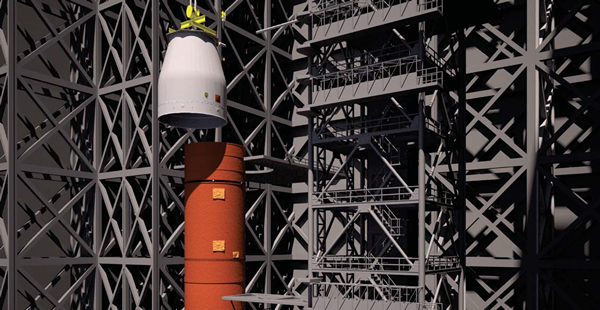
With the EUS, which will be powered by four RL10-C3 engines, SLS will be capable of lifting more than 105 metric tons (231,000 pounds) from Earth’s surface. Unlike the previous adapter, the USA will be capable of carrying large co-manifested payloads, such as a habitat. To protect and deploy those payloads, the design incorporates systems to control temperature, mitigate noise and release the payload.
The USA will be made of four composite honeycomb-core quarter panels and umbilicals and disconnects. At liftoff, the USA will weigh approximately 9650 lb. Once the Orion is deployed, the USA will separate to release payloads.
“The second configuration of SLS, known as Block 1B, will be the workhorse of the proving ground phase of NASA’s journey to Mars,” said Steve Creech, Director of the SLS Spacecraft and Payload Integration and Evolution Office at NASA’s Marshall Spaceflight Center in Huntsville, Ala. where the SLS Program is managed.
The Universal Stage Adapter (USA) is utilized for NASA’s Space Launch System (SLS). The SLS is a powerful, advanced heavy-lift launch vehicle designed to be flexible and evolvable for deep-space destinations. The base contract effort, led by Dynetics a subsidiary of Leidos, is to design, test, manufacture, and deliver one USA. The acquisition also includes qualification and flight quick disconnects, payload encapsulation tooling, lifting Ground Support Equipment (GSE), transportation hardware, internal access platforms, and ground processing and transportation cover.
The USA will integrate the Exploration Upper Stage (EUS) to the Orion crew module while providing structural, electrical, and communication paths. The USA will also provide environmental control to payloads during integrated ground operations, launch, and ascent phases. The USA will integrate primary, co-manifested, and secondary payloads on the EUS.
View additional information about the Space Launch System program.

